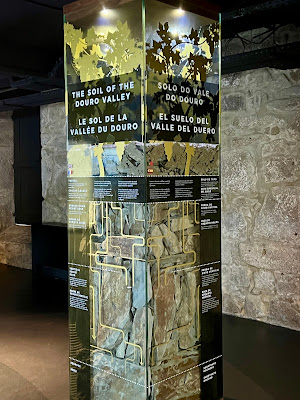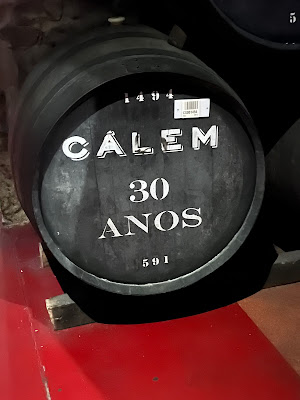Cálem was founded in 1859 by António Alves Cálem, who desired to export wines to Brazil, which was not the typical market at that time for such wines. Britain and other European countries were the primary markets, but there was a significant Portuguese population in Brazil, so Cálem's idea had merit.
In 1998, the Spanish-owned company Sogevinus was established and its first purchase was Cálem. It would later purchase other Port producers, including Burmester, Kopke, and Barros. Sogevinus concentrates on Port Wine, and in 2020, about 7.8 Million bottles of their annual production of 8.8 Million were Port. In addition, their Cálem Velhotes brand is the top seller in Portugal, accounting for about 25% of all Port sales. That's a huge portion of the market!
Cálem owns about 33,000 acres of land in the Douro, including 3 high-quality, A-1 vineyards. As they need more grapes than they grow, they also purchase grapes from other growers. Cálem annually exports about 12 Million bottles to around 50 countries. Their symbol is a caravel, a small sailing ship which was popular from the 15th-17th centuries.
At Cálem, you can first visit their small museum, which deals with the Douro region and Port production, a good way to learn some basic information about this fascinating region. The official tour then begins with a 4 minute movie and you're given special glasses to wear so you can see some special effects during the film. In addition, the seats vibrate at times, creating more of an immersive experience.
After the short movie, the tour moves into the cellars, and I'll note that the Cálem cellars are even older than the winery's founding in 1859. I'll also note that most Cálem wines are not made in lagares, except for some special still wines, and Cálem doesn't produce aged White Ports. The winery uses about 14 white grapes and 15 red grapes for their wines. And their last Vintage Port was in 2020.
One of your first stops in the cellar was in front of one of their great vats, which can hold 74,000 liters of wine. These huge barrels take 8 coopers about two weeks to construct, and we saw a vat that had been made in 1917. It was very cool that the winery showed a number of lighted displays on the great vat. I thought this was a fascinating and memorable way to educate people about the winery and Port wine. The addition of this visual display enhanced the tour, making it better than simply a dry recitation of the facts.
The tour comes from a wine tasting, but we skipped the tasting as we were headed to a Port tasting at the nearby Kopke store.
We started off lunch with the 2022 São Luiz Rosé, made from the Tinta Coa grape sourced from the São Luiz vineyard in the Douro, which is owned by Kopke. With an appealing aroma, this Rosé was delicious, elegant and subtle, dry and crisp. Tasty flavors of red fruits, some floral hints, and a backbone of minerality. Easy drinking but not overly simple, and an excellent way to begin our lunch.
Our first course was slices of Seared Tuna, which were tender and flavorful, and the dish looked beautiful as well. The sesame seeds added a nice textural component, and the roe added a taste of the sea.
Our second wine was the 2020 São Luiz Reserva Tinto, made from a blend of red grapes, and it too was delicious. Fruity, with flavors of red and black fruits, a hint of spice and a touch of smoke. Good acidity, a pleasant finish, and smooth tannins. Neither of the two São Luiz wines are yet available in the U.S., but the Tinto may be in the near future.
Our second course were tender and tasty Slices of Beef, accompanied by a vegetable mix and crisp French fries. The dish went well with the red wine.






















No comments:
Post a Comment